Gowanus Dredgers Canoe Club Gets Ready For A New Season

GOWANUS – The weather on Saturday proved perfect for the Gowanus Dredgers Canoe Club‘s annual Spring cleanup.
Members of the Gowanus Dredgers and volunteers gathered over the weekend to clean the organization’s boathouse, equipment, as well as the shoreline before strapping on life jackets and hopping into freshly-cleaned canoes to embark onto the Gowanus Canal to pick up debris floating on the surface of the Superfund site.
While only typical trash like Starbucks plastic cups, plastic bags, and rubber bands were retrieved from the Canal on Saturday, past discoveries have included a rainbow-colored ball and slate tiles (which were added to the Gowanus Souvenir Shop’s archive program), car parts, and a shopping cart.
“There are parts of the canal that you can’t really see from publically accessible places, like the 6th
Street Turning Basin,” the Captain of the Gowanus Dredgers Canoe Club, Brad Vogel, says. “If you go back in there, there are numerous sunken boats—there’s a giant, old sunken barge.”
Last spring, dozens of old circuit boards were unearthed at the former 1st Street Turning Basin. “They were from old computers that had been dumped on the shoreline and covered over in muck,” Owen Foote, the President of the Gowanus Dredgers explains. A Dredgers’ board member, Eymund Deigel, “found one and then he found 50,” Foote adds. The group hopes to transform the electrical castoffs into artwork or jewelry.
The Dredgers were kind enough to allow BKLYNER to tag along on their cleanup of the Gowanus Canal. Check out the slideshows below.






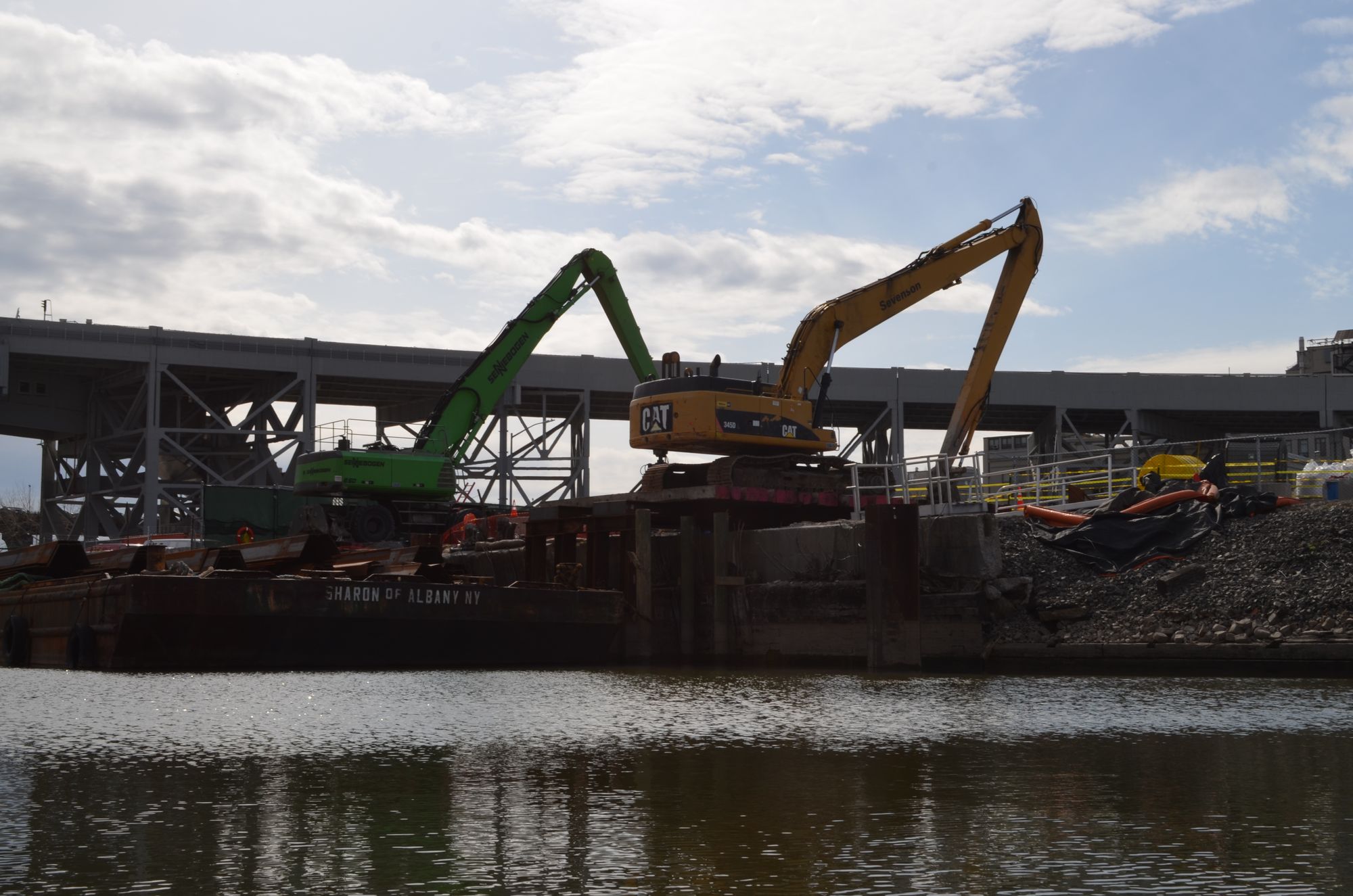





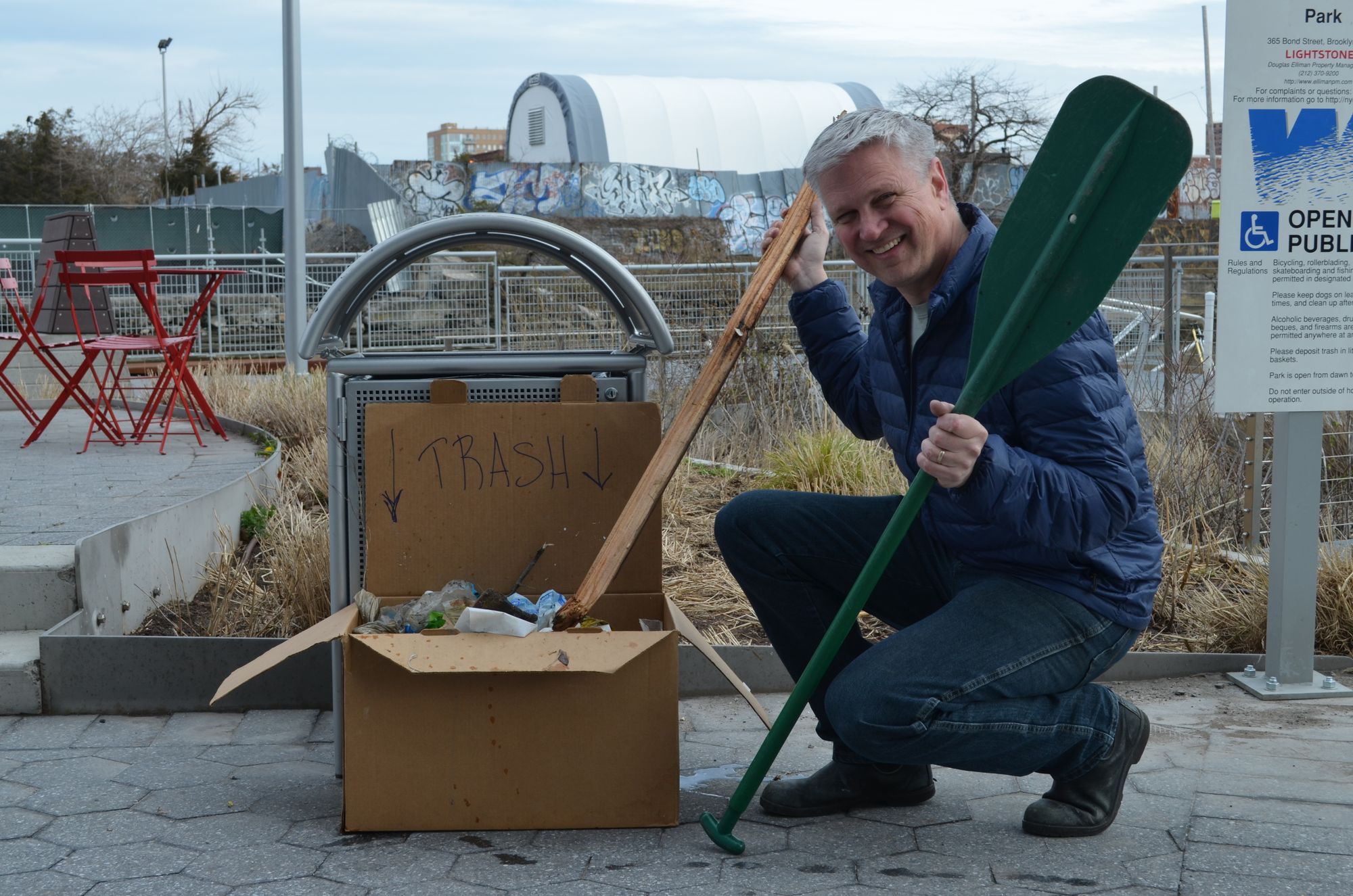


Founded in 1999, the Gowanus Dredgers promote recreation, education, and advocacy in an effort to revive the Gowanus Canal and support its cleanup.
“That’s our whole mission, is to get people down to the waterfront to actually engage with the canal,” Vogel explained. “That always sounds so oxymoronic because we don’t want people to engage with toxic chemicals or runoff from the CSO tanks, but the thing is, if we’re going to sustain this effort to clean up the canal—that the EPA has started now over in the 4th
Street Turning Basin—we have to keep up a general public engagement, awareness, and involvement.”
“The purpose of why we do this is to reengage and reconnect New Yorkers with their shoreline,” said Foote in agreement. “If you’re in direct contact with the water— floating on it or engaging in it—just maybe you’ll become passionate for its restoration and cleanup.”
Foote founded the Gowanus Dredgers nearly 20 years ago with a handful of friends who wanted to canoe in the canal. “I moved to Brooklyn in 1991 and started asking, ‘Why aren’t people canoeing in this waterway?,'” Foote recalls. “At the time, there was no circulating water so it would not have been wise to canoe on it…. So I decided to get involved in cleaning it up.”
Foote, an architect and urban planner, advocated for the repair of the Gowanus Canal Flushing Tunnel in the early 1990s, and the city finally reactivated it in 1999. Built in 1911, the Gowanus Flushing Tunnel uses a propeller to circulate and flush water in and out of the canal, to and from New York Harbor. A mechanical failure in the mid-1960s suspended the pump’s service, causing the canal to sit stagnate for decades until the Tunnel was reactivated again.
“After the pumping station was reactivated, that evening I went out with a few other people who were heavily involved [in getting the pump fixed], and at the end of night, we decided to start a canoe club,” Foote recalls.
But the organization is much more than just paddling down the canal. “It’s not just about canoeing, it’s really about connections,” Foote explains. “What we’ve really been doing for the last 20 years is making the connection between the environment and the sport and the people who live in the city. Now we’re making connections about the neighborhood.”
The Gowanus Dredgers host an array of activities to attract people to the canal including art exhibitions, canoe tours, and races. The next Gowanus Challenge Race is scheduled for Saturday, June 9.
The Dredgers also collaborate with other local organizations in hosting events. Last year they worked with the Brooklyn Book Festival to present a dawn reading of Virginia Woolf’s The Waves from canoes at the Carroll Street Bridge. Yesterday they welcomed contestants of the Brooklyn Folk Festival’s Banjo Toss Competition who took turns hurling a banjo into the Canal. Later in the season, they hope to host musical events, film screenings, as well as the weekly program Lighten Up Brooklyn which will consist of an early morning canoe rowing workout.







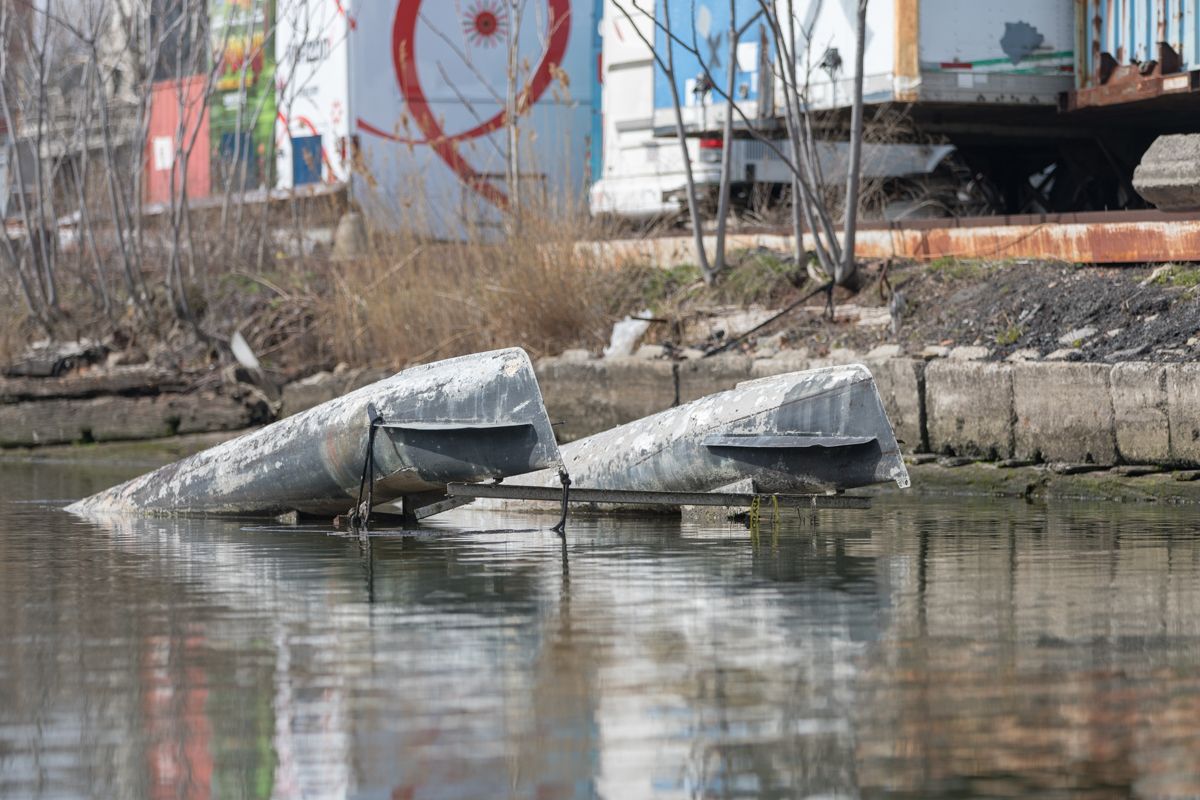




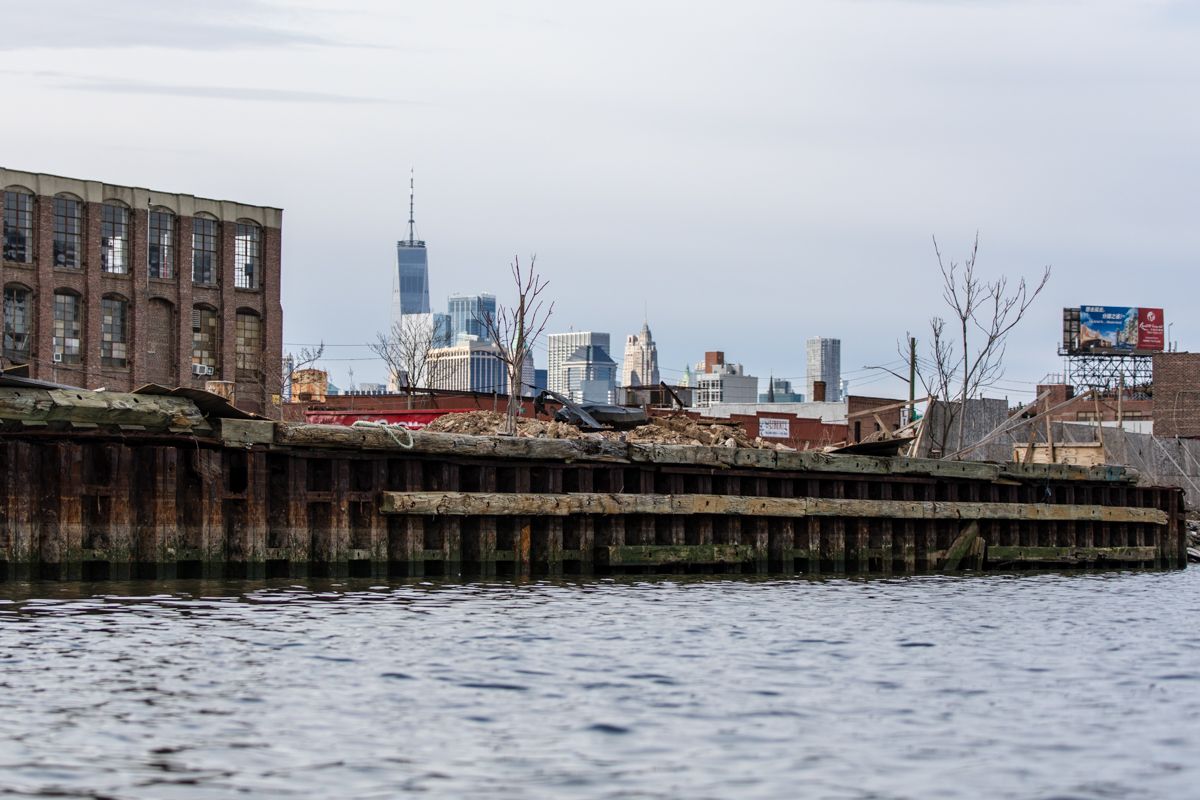


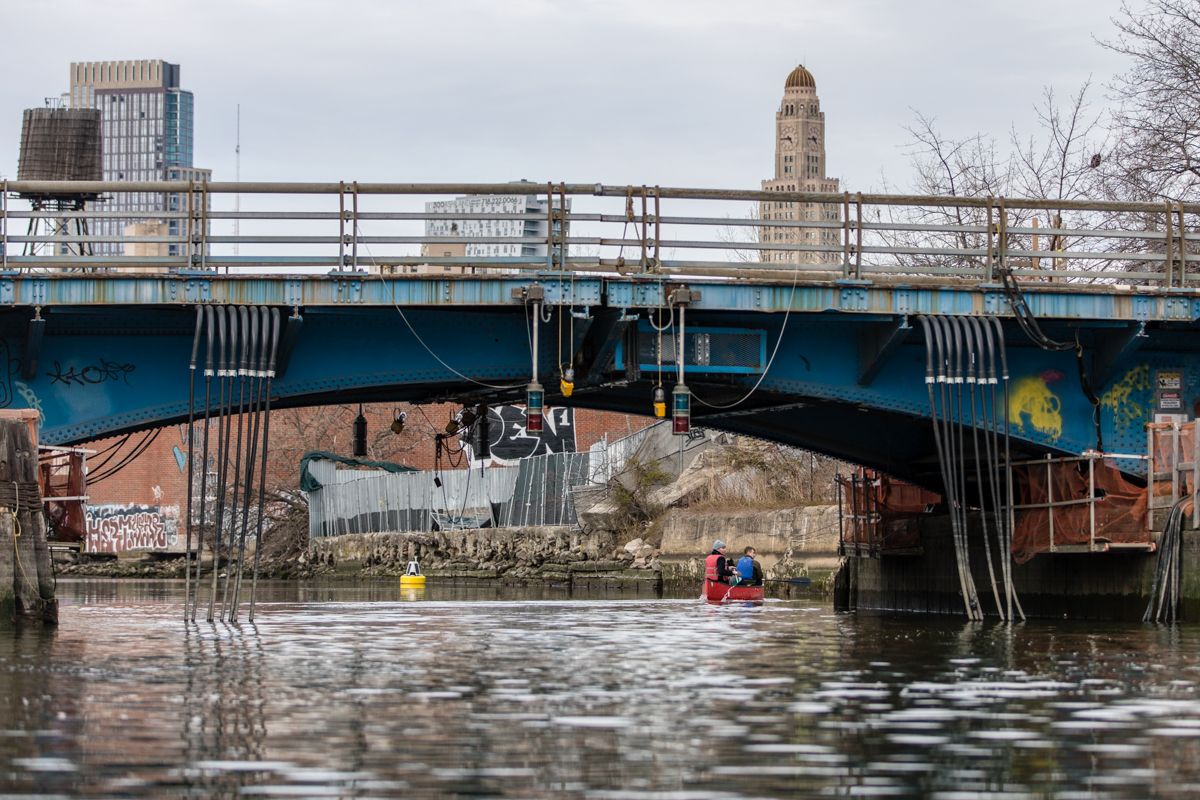
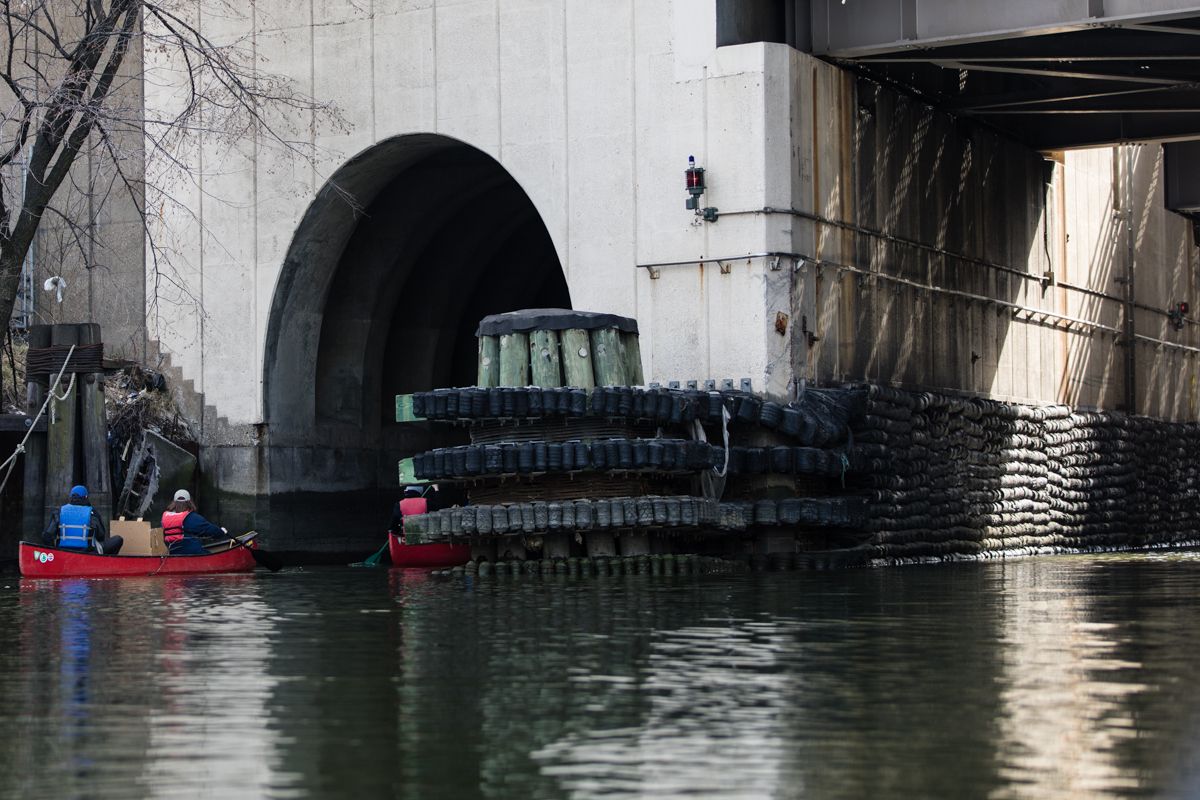

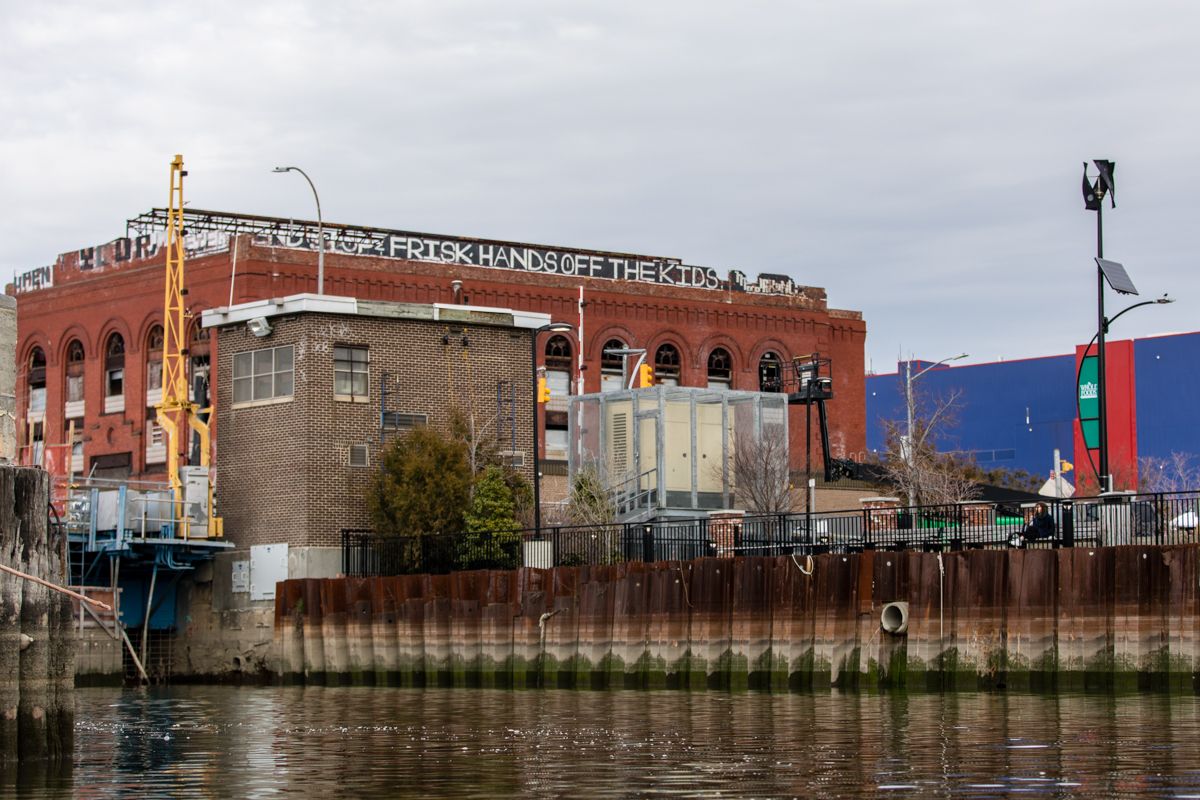

Foote says he also hopes to get others involved with the neighborhood improvements. “Future development is inevitable and bound to happen but the bigger question is how to make it sustainable in a Gowanus sense…. Sustainable meaning captur[ing] and preserv[ing] some of the businesses and artists and maintain[ing] that character while allowing for development to occur at the same time,” he explains.
“Can we also develop so that we can engage with our waterfront?” he asks, noting that while the 365 Bond luxury development, where the Dredgers’ boathouse is located, includes a waterfront esplanade, it does not offer residents easy access to the Canal.
“We’re engaging people with their shoreline to create that passion for a cleanup. We’ve been so successful for 20 years, something like [365 Bond] is counter-productive.”
“We have small children looking for things to do. We have all this open space [but] they have nothing to do here. Why don’t we have some sort of play equipment [here]?,” he asks. “Is that really public open space and is that really an amenity?” he asks of the esplanade, which aside from a few benches, tables and chairs, does not feature anything to invite visitors.
“Why not make these spaces fun, quirky and cool? Why not make these spaces indoor and outdoor and [offer] amenities?” Foote suggests.
“That’s the next challenge,” he says. “As these buildings get built, can we actually build amenity spaces for people that are enjoyable and interesting for the community and are possibly reflective of the character and charm of the neighborhood?”




